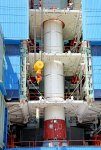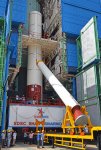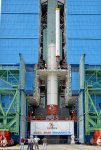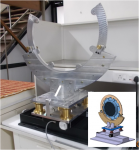@Ashwin @Parthu @randomradio @vingensys et al.
Looks like ISRO's efforts on nuclear engines are starting to pay off. Beta-voltaic batteries are very low power, but its a good start. It might pave way for alpha-voltaic batteries or even RTGs in the future.
Pune varsity’s Physics department develops nuclear batteries for Isro
Updated: Dec 03, 2019 20:34 IST
By Dheeraj Bengrut
Scientists at the Savitribai Phule Pune University’s (SPPU) Physics department have developed nuclear batteries for the Indian Space Research Organisation (Isro) which they said can provide low voltage power for 30-35 years without charging or maintenance.
The project, which was initiated in 2015, was completed recently with Isro’s support which has an independent unit at the SPPU campus. MC Uttam, director of the Isro cell at SPPU, confirmed that the completed project report on nuclear batteries had been received by Isro.
The team which worked on the project included professors Sanjay Dhole, VN Bhoraskar; faculty members Shailendra Dahiwale and Bhushan Patil and research student Ambadas Phatangare.
Prof Dhole said that radioactive beta-sources with high activity were used for the successful design and fabrication of three kinds of nuclear batteries for providing power. These include direct charge collection based on charging semispherical and hemispherical capacitor by beta particles; ‘beta-voltaic’ based on Schottky junction-type batteries using microcrystalline and nanocrystalline SiC, and nanotubes of TiO2 and ‘photovoltaic nuclear batteries’ using light from tritium radioactive source and photovoltaic solar cells.
“All these low-power nuclear batteries were designed, developed and successfully tested in the Microtron and Neutron Generator Lab of department of Physics and the required radioactive sources were purchased commercially from the Board of Radiation and Isotope Technology (BRIT), Government of India. The total cost of the project is around Rs 25 lakh,” he said.
According to Dhole, the hemispherical capacitor type charge collection battery can possibly be used in harsh environments, such as space and deep sea, without affecting the power output and stability. “Moreover, it can be used to accumulate energy on an external capacitor over a short or long period; minutes to days, for operation of sensors,” he said.
Ambadas Phatangare said such nuclear batteries find application in situations where battery replacement is inconvenient and there is no electric power supply for charging chemical batteries. “Such a requirement is often found in space application for gas sensor, torches in aquatic environments, implantable biomedical prosthetic devices and such other areas,” he said.
Prof Bhoraskar said to the best of their knowledge, the indigenous development of nuclear batteries in SPPU has been carried out for the first time in the country.
Somak Raychaudhury, director, Inter-University Centre for Astronomy and Astrophysics (Iucaa) which is located in the SPPU campus said that satellites and space instruments are dependent on solar panels for their power supply. Normally the life of a satellite in space is up to five to 10 years. But with space exploration to the Moon, Mars and beyond, long duration batteries are required and nuclear batteries can be very useful for such missions.
“It is fantastic that our SPPU Physics department has developed such batteries,” he said, adding that if these batteries produce energy realistically, they would find applications in spacecraft. He said he was not aware of such batteries being produced anywhere else in the country.
The SPPU scientists said nuclear batteries can be used effectively in Pacemaker biomedical devices, deep sea, long duration space expedition, submarines, mining operations and military applications.
Pune varsity’s Physics department develops nuclear batteries for Isro






















